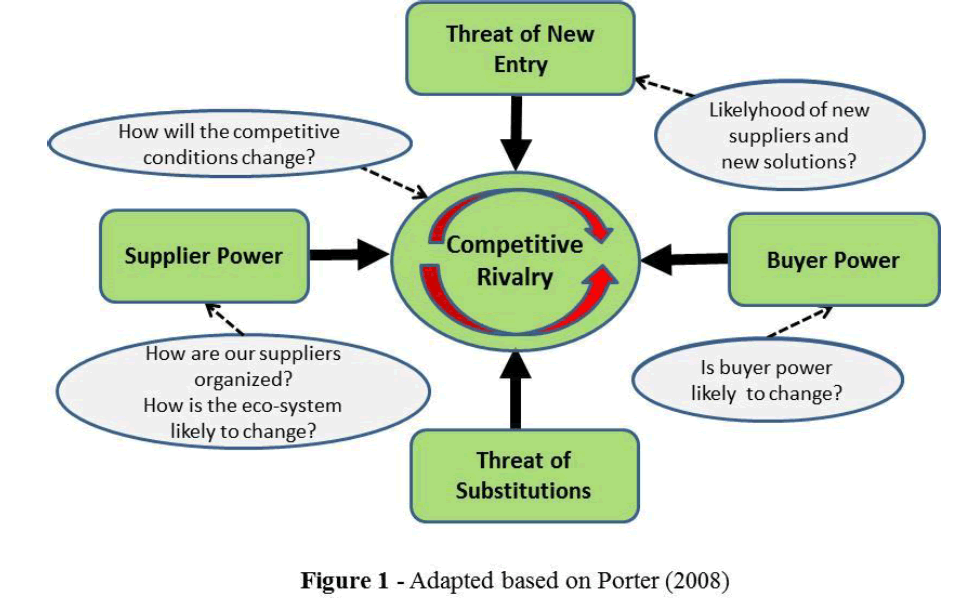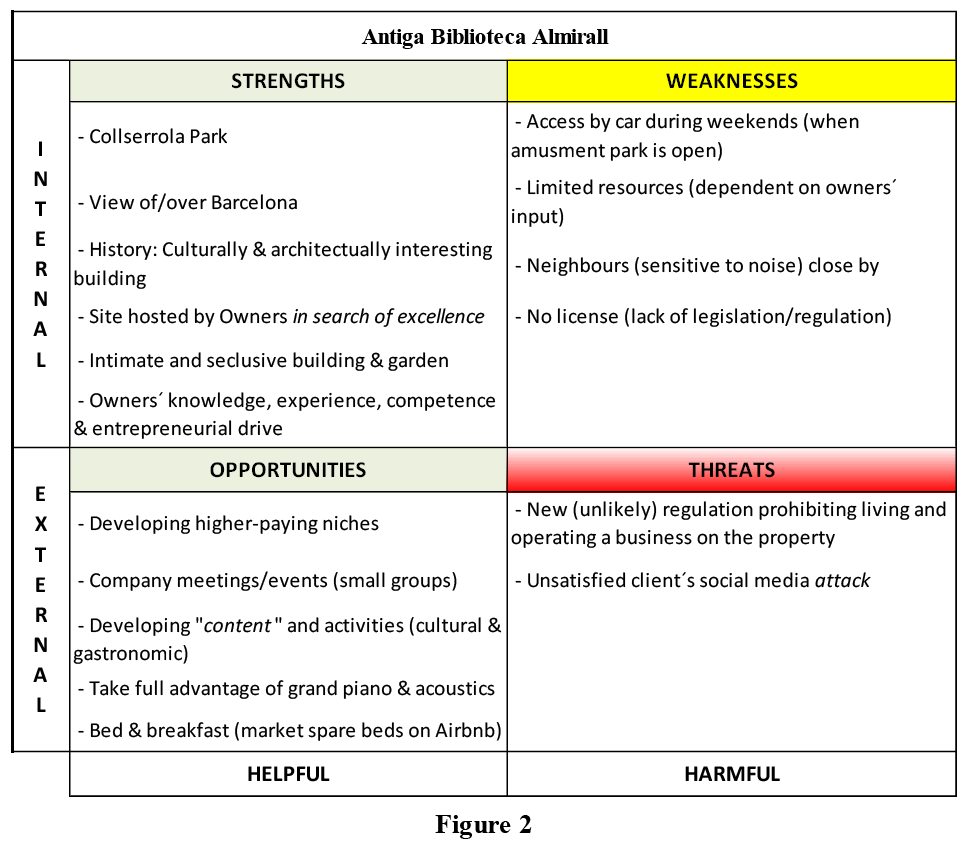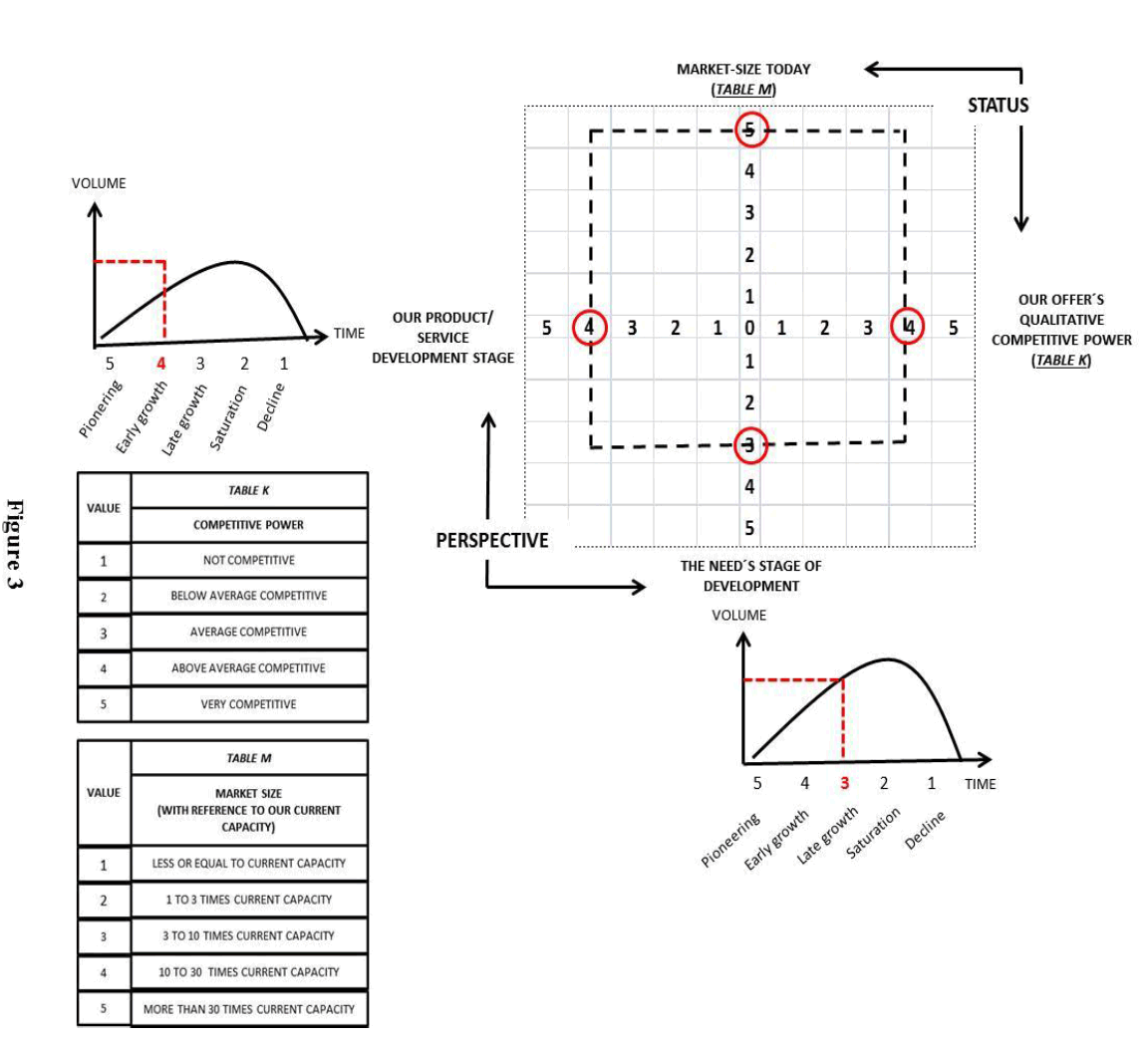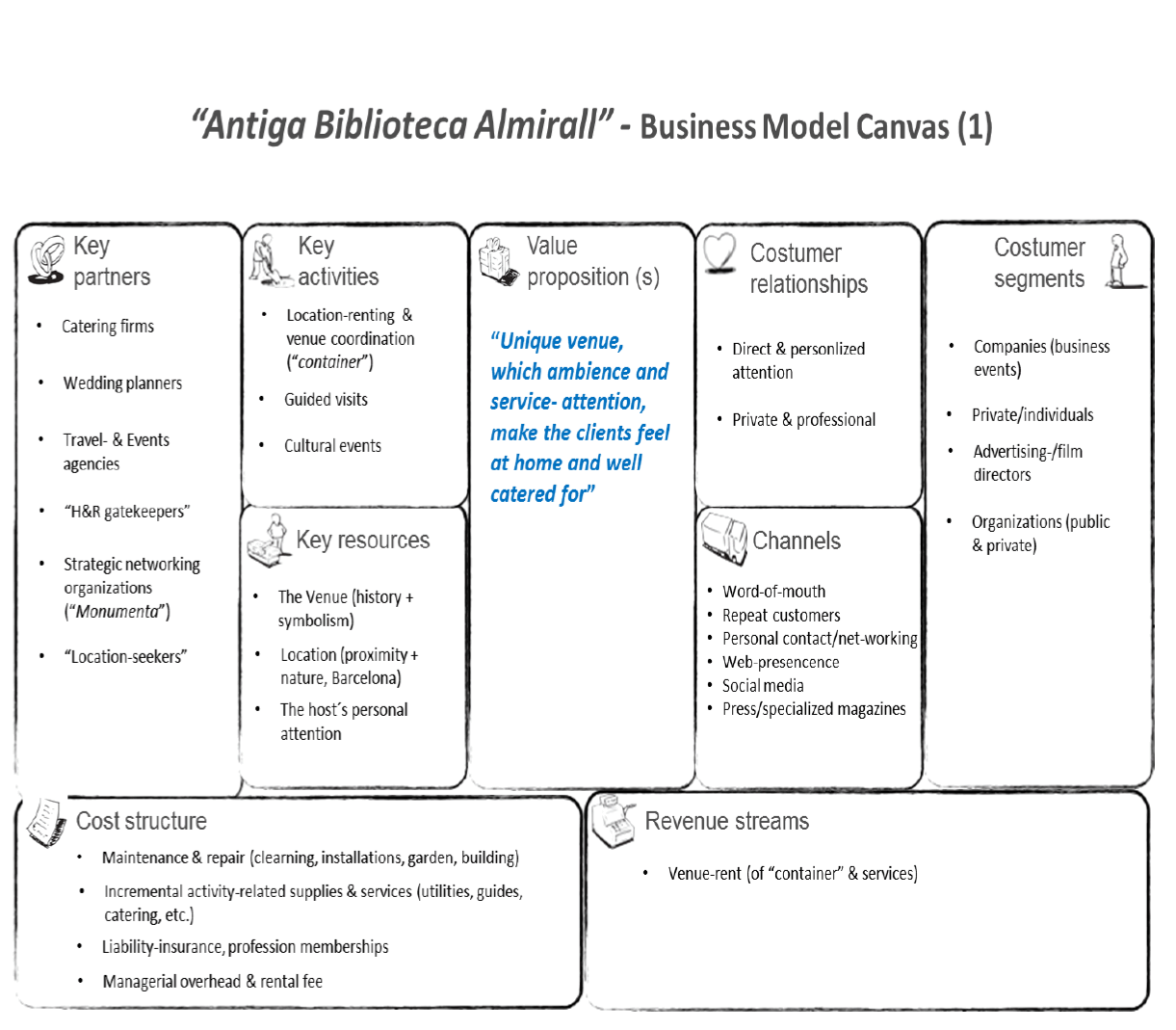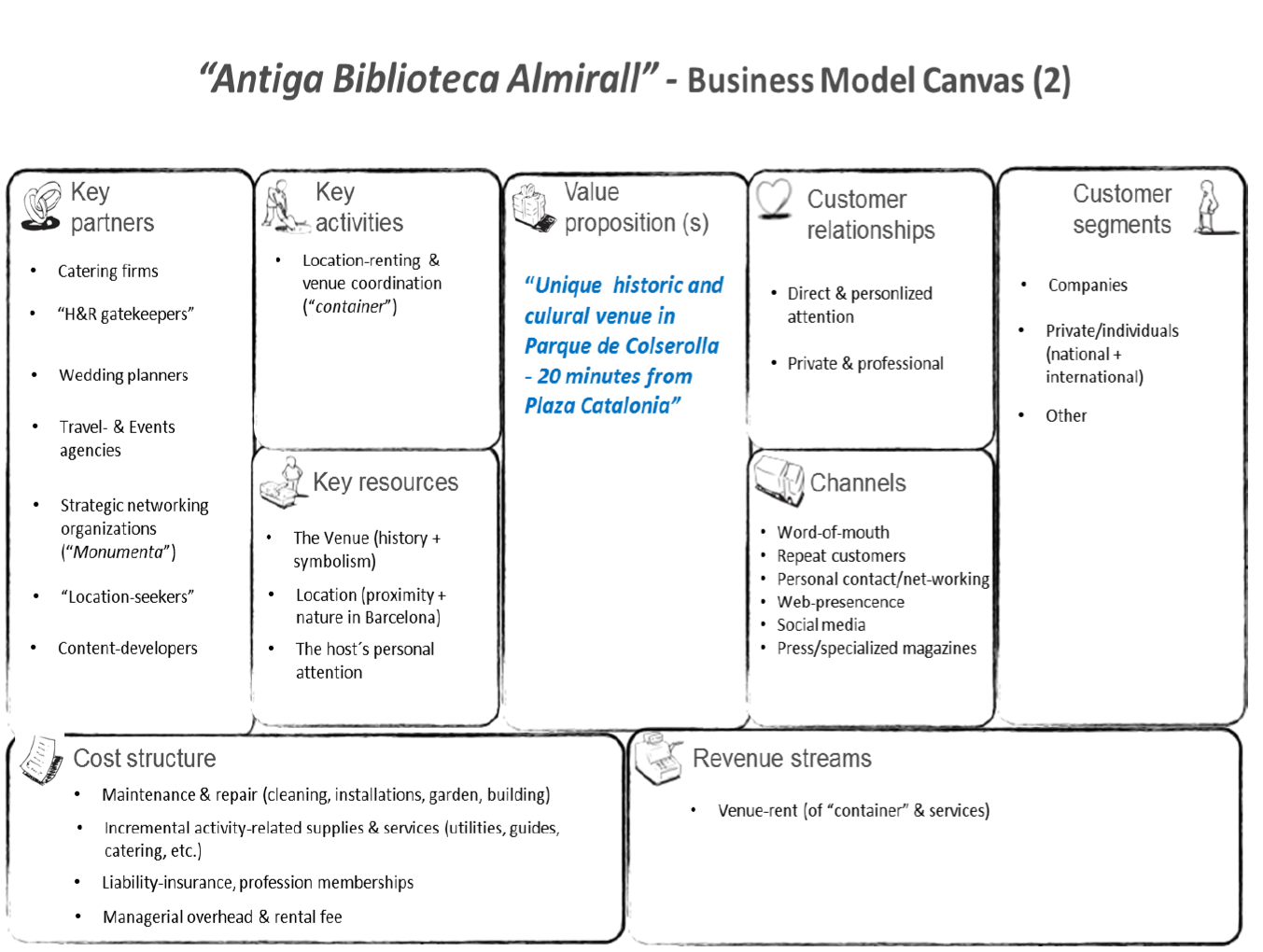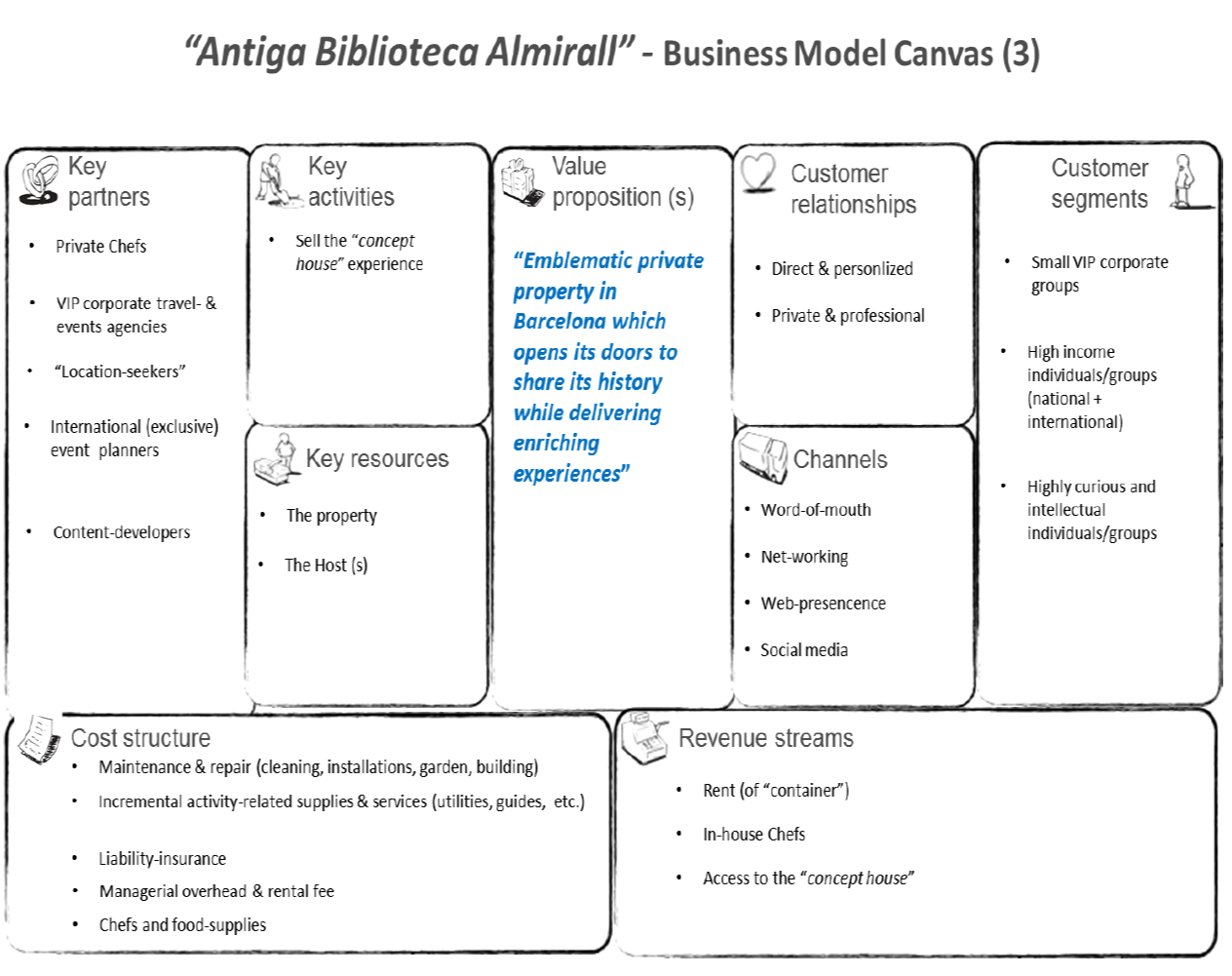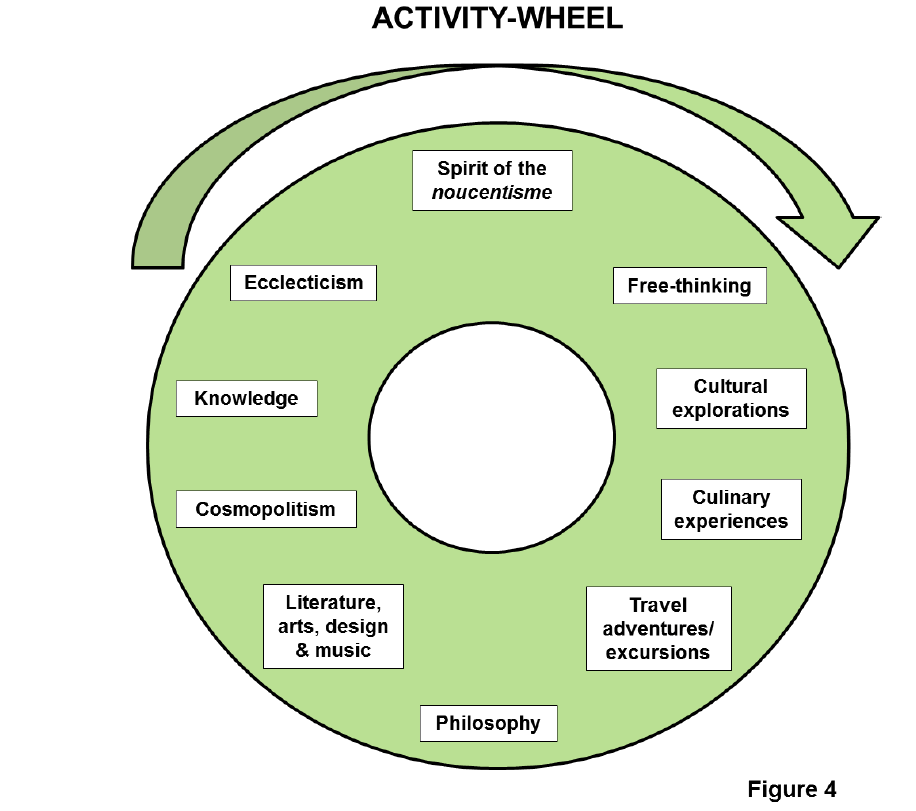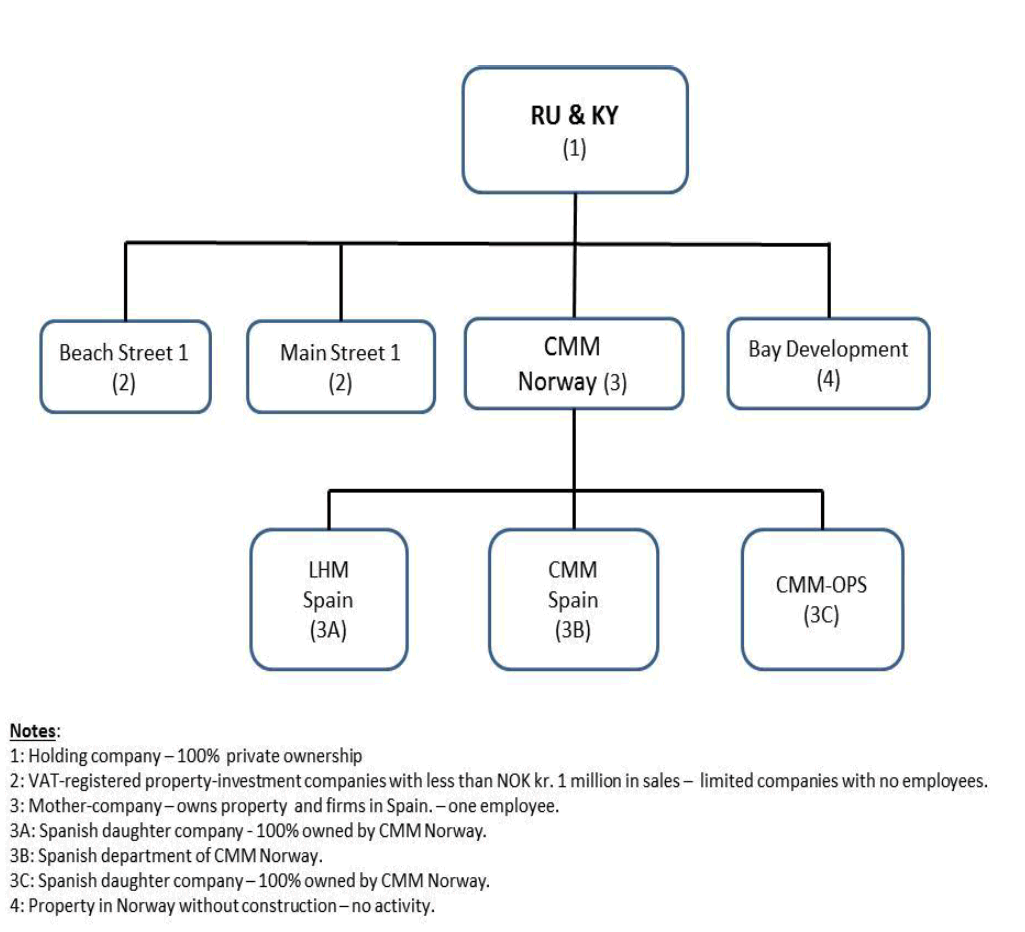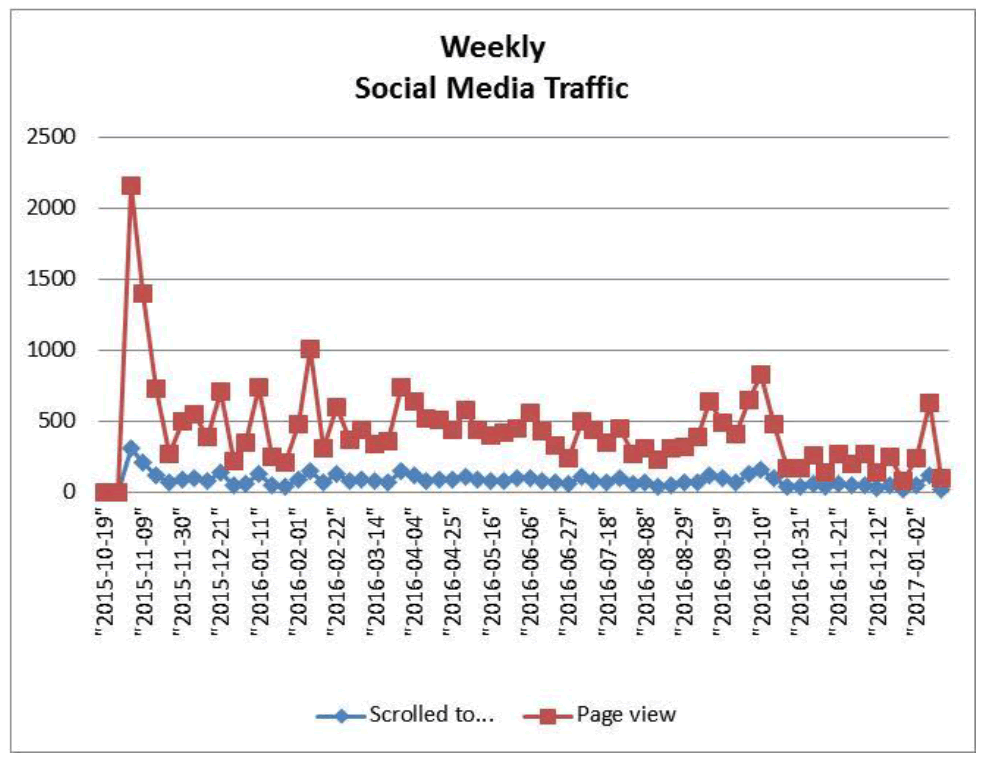Case Reports: 2017 Vol: 23 Issue: 1
Case Study : Antiga Biblioteca Almirall :The Reinvention of an Old Library
Oyvin Kyvik
Western Norway University of Applied Sciences
Case Description
The primary subject matter of this case is entrepreneurship in a very small firm and the real-life complexity of finding an optimal strategic path when several opportunities and challenges present themselves at the same time. Secondary issues include strategic analysis, choices, and decision-making under uncertainty in the context of a resource-constrained small business. Owing to its rich environmental context, the case has a difficulty level most appropriate for senior undergraduate to first-year graduate school level courses. The case is designed to be taught in one or several 3-hour sessions and is expected to require 4–8 hours of preparation by students, depending on the students´ level and their range of disciplinary knowledge.
Case Synopsis
The case study examines how an old private library located close to the center of Barcelona is gradually renovated and reinvented as a location for celebrating special events (board and business meetings, exclusive dinners, cultural activities, etc.). The case describes how the owners develop and explore new business opportunities through a process of innovation, business modeling, prototyping, and continued dialogue with clients, partners, suppliers, and other stakeholders. The narrative illustrates both the challenges and uncertainties of developing an entrepreneurial project and the importance of combining rational decision-making with a creative stance. The complex reality of a real-life business situation with anything but perfect information is described, and the intent is to put the student in the entrepreneurs´ and decision-makers´ shoes. As the author played a role in the real case, it is hoped that some of the passion of “actually being there” and feeling the pressure to make decisions and follow the sometimes rough and curvy entrepreneurial path is reflected in the telling of the story. The case gives ample information about the context and the dilemmas faced by the owners. In addition, as both owners are business graduates, now with many years of experience, the case naturally also illustrates how they use managerial theory and analysis, but also how decisions often are taken based on a balance between rational arguments, gut feel, and vague perceptions of business opportunities. In the context of the analysis, the case refers to tools, methods, and concepts within the fields of strategy, organization theory, and entrepreneurship.
The case also serves to illustrate an intricate entrepreneurial lifestyle where the distinctions between work and life become fuzzy and almost irrelevant. The story describes how the owners´ entrepreneurial drive is founded as much on the wish for independence, strong self- belief, and the desire to make dreams come true as on making a profit or growing the business.
Introduction
Martha and Oyvin bought the property on which Antiga Biblioteca Almirall is located from Barclay´s Bank in 1999.
Martha (now 54) and Oyvin (58) are partners in several ventures. Martha functions as the entrepreneur, project manager, and facilitator for activities in Spain. Oyvin, on his side, is responsible for funding and intends to keep control of not only the flow of ideas, but also cash flow and liquidity. Martha and Oyvin are the only two people actively and directly engaged in the operation (see Appendix D for an illustrative overview of the organizational structure). All other services are sourced in from other firms. Martha is engaged 100% in her role, while Oyvin dedicates approximately 50% of his time to his role.
After almost 15 years of gradual upgrading of the premises, the building and garden are now in excellent condition. However, Martha and Oyvin are scratching their heads concerning the best strategy for making a profit on the investment. Their goal is to use the property for cultural events, celebrations, and business meetings, and to simultaneously live on the property and keep the investor happy. However, what is the optimal business model, and which paths should they follow to implement their strategy?
Antiga Biblioteca Almirall – The Origins
In 1924, the widow of the Catalan politician and journalist Valentí Almirall i Llotzer constructed a library in his memory close to the top of the mountain Tibidabo in Barcelona. Apparently, Valentí had not cared about the blessing of the church, and the couple was not officially married until after his death. Valentí Almirall (1841–1904) was one of the first Catalan republican politicians and is also considered one of the first federalists, thus making his library particularly relevant in light of the current independence debate in Catalonia.
The library building today consists of:
1. A basement/first floor with an apartment of about 100 m2 (3 bedrooms, 2 bathrooms, 1 study, kitchen, and a sitting room).
2. A second (or main) floor where the 80 m2 old library is located (along with a courtesy restroom). The library is a 5-meter high open space with a central skylight. The library also has a grand piano and white carved-stone fireplace.
3. A third (top) floor with a fully furnished suite, bathroom, and large roof terrace with views of Barcelona.
The library and the first-floor apartment have separate entrances. The library also has a direct exit to a terrace and garden. The building is 234 m2 and is located on a lot of 2,850 m2 containing in addition to the building a guest room, service area (laundry and storage room), small office, swimming pool, garden, and a forested area of about 1,500 m2. The Antiga Biblioteca Almirall is located approximately 12 km from the center of Barcelona (Plaza Catalonia) in the large Collserola nature park (http://www.barcelonaturisme.com/wv3/en/page/527/parc-de-collserola.html) and about 20 minutes by car from Barcelona´s international airport.
The Antiga Biblioteca Almirall really has a privileged and unique location very close to the top of Tibidabo (512 meters above sea level). It belongs to the Cim de Tibidabo (top of Tibidabo) neighborhood of about 65 families—families that really feel proud of their proximity to nature and wildlife only a few kilometers from the hustle and bustle of metropolitan Barcelona. As far as entertainment is concerned, the neighborhood only has the Temple of Tibidabo (https://en.wikipedia.org/wiki/Temple_Expiatori_del_Sagrat_Cor), Bar Marisa (https://www.trip advisor.es/Restaurant_Review-g187497-d6909757-Reviews-Bar_Restaurant_Marisa-Barcelona_Catalonia.html, and the Tibidabo Amusement Park (http://www.tibidabo.cat/en/discover-the-park/what-is-tibidabo/) to offer neighbors and visitors. The Tibidabo Amusement Park is publicly owned and attracts an increasing number of visitors every year.
The Antiga Biblioteca Almirall has the parking lot of the amusement park as its closest neighbor, something which creates opportunities by providing relatively easy access to parking for visitors, but also quite a bit of traffic during weekends. An increasing number of tourists are passing by the biblioteca on their way to Tibidabo, indicating that the campaign of Barcelona Tourism to bring more tourists out of the congested city center is gradually having an effect.
The current regulation governing the Antiga Biblioteca Almirall property is 7EC under the special urban plan for the top of Tibidabo (Pla Especial del Cim de Tibidabo, 25/11/1992), allowing residential use as long as this use is not altered. Regulation 7EC allows also public use as a social, educational, and religious facility. All properties forming part of the special urban plan for the top of Tibidabo fall under the same regulation.
For the double use of the property—i.e. combining residence with using the property for social and other types of events—there is currently no special-activity license required, and a recent consultation with an engineering firm specializing in activity licenses concluded that “it is better not to ask” the authorities concerning an activity license as long as the business as a minimum has liability insurance.
Recent History
At the time of acquiring the property in 1999, Martha and Oyvin had just closed a business focused on children’s “edutainment” and were in need of a place to temporarily store equipment and restart the operation in the form of a children´s museum. See Appendix A for short biographies of the owners.
Oyvin recalls the first visit to the property accompanied by a Barclay´s real estate agent: “It was a freezing cold January morning, and the property really looked desolated and abandoned. We passed through a gate closed with a thick padlocked chain below some statues in very poor condition decorating the main entrance to the library. . . . The condition of the building and property was really not appealing at all, but with its low ticket price, large lot, and relatively short distance to Plaza Catalonia, we almost immediately saw possibilities.”
The building was initially used for storage, while the property was evaluated as a suitable site for the establishment of Spain´s first permanent children´s museum. This project was, however, eventually discarded and the owners decided to inhabit the property and manage their Spanish operation from the premises.
Since 2001, the property and the building infrastructure have been upgraded in three phases, the last finishing in 2008, with a total investment of €945,000 including the purchase price. The upgrading has been financed partly by equity and partly by a loan from Barclay´s bank.
Martha, who incidentally always had the dream of owning and running a restaurant/catering business and already had experience in the business, suddenly saw an opportunity to realize her dream. As a result of her energy, business sense, and entrepreneurial drive, during the period 2007–2016 the Antiga Biblioteca Almirall was gradually tested as a venue for business meetings, small concerts, family celebrations, anniversaries, and even as a venue to celebrate academic graduations. See Appendix B for an overview of prototyping events.
Gradually, the Antiga Biblioteca Almirall, due to the building´s singularity, uniqueness, and location in the Colserolla nature park, has confirmed its potential as a venue, and the business idea has gradually developed during the various phases of renovation. Note, however, that as the Spanish economy faced an economic crisis in 2010 and companies and organizations restrained their budgets, the level of activity and demand for venues dropped dramatically. Consequently, the property was rented out on the regular housing market from 2011–2015 while the owners travelled, lived, and worked abroad. The owners, however, returned to Spain in September 2015 and have since focused on developing a new commercial strategy to get return on their investment. While local real estate agents estimate the current market value at approximately €2.3 million, the owners do not wish to sell the unique property and are searching for ways of further commercially developing it, but in a manner that allows them to continue living there. The webpage of Antiga Biblioteca Almirall (http://www.bibliotecalmirall.org/) illustrates well the current state of affairs of the property.
A New Beginning
Upon returning to Barcelona in September 2015, the owners again felt pressure from the Norwegian holding company to increase the return on the property investment. As the Spanish operation is organized as a commercial department of a Norwegian limited company, the results are annually consolidated into the parent company´s accounts and thus have contributed to unsatisfactory financial results during the period of renovation and crisis in Spain. The property value has, however, during the same period increased substantially. The company results are annually reported to the Norwegian company registry after being audited by a Norwegian CPA. The Norwegian parent company listed a loss of €21,475 in 2015. See Appendix D for an overview of the ownership and reporting structure.
With reference to the owners´ biographies and the current ownership structure, it should be noted that as for most entrepreneurial small firms, there never has been a clear distinction between business and family life (Kotey & Meredith, 1997; Miller & Toulouse, 1986), and over the years many times business discussions have formed part of the daily breakfast and dinner conversations. According to Martha, “We have really always done what we wanted, but we have also paid a price in terms of sometimes having a hard time turning off the ‘engine’ and disconnecting from our ventures.”
Also, the cultural differences (Apud et al., 2003) between the partners—between Oyvin´s Norwegian Lutheran rationality and Martha´s Catholic and “roundabout” Colombian mindset—may have played a role in the way decisions have been taken. Oyvin comments that “liquidity problems are an unknown phenomenon for my partner, as she always claims that ‘Dios proverá’ (God will provide).” For him, an analytic and numbers-oriented decision maker, this way of thinking is sometimes incomprehensible, and he believes this clash of mindsets from time to time may have unnecessarily delayed and strained the decision-making process. On the other hand, however, Martha claims that without her optimism and entrepreneurial drive regarding the renovation of the library, the project would never have been realized. “You have to be a little crazy and not too bogged down in numbers and analytics to realize an entrepreneurial dream,” she concludes.
Again, with reference to the ownership structure, it should be noted that management resources (Barney, 1996; Grant, 1996) are very constrained in a firm with less than two full-time employees for all roles, functions, and activities. Some duties, such as accounting, auditing, maintenance and repairs, have consequently been outsourced to other service providers after a careful cost-benefit evaluation.
From Business Context to Methodology and Data Analysis
Since the choice of next moves was both complex and uncertain due to lack of available data and the data available being of questionable quality, the owners decided to do a strategic analysis based on a mixed-methodology approach combining accessible secondhand statistical data with qualitative data collected from discussions with clients, potential clients, suppliers, networking partners, and collaborators. The owners were also conscious that perfect data would hardly be available, and thus that they in the end needed to rely on their entrepreneurial experience and gut feeling (intuition). To develop the framework of the business model development, ideas from Osterwalder and Pigneur (2010) were combined with ideas from Chesbrough (2010).
Quantitative Data Collection and External Analysis
Soon after returning in September 2015, Martha realized that both the venue market and the competition had changed quite significantly since she had left in 2011. One of the effects of the economic crisis is that additional event sites have emerged on the market, including sites and venues which previously either would not have been considered possible or were not looked upon as a business opportunity by the owners. Thus, thanks to a combination of local creativity, business drive, opportunism, and necessity, the supply has augmented considerably during the last few years.
Both Martha and Oyvin are business graduates, and they decided to reflect on the strategic changes amplified by the economic crisis in Spain based on Porter´s Five Forces (Porter, 2008) (see Figure 1).
The following points came up in their various discussions:
1. Threat of new entry:
Considering the increase in supply due to opportunism and necessity, Martha considered that the threat of new entry now is moderate (projects that were easy to launch have already entered the market). New modern facilities in hotels, industrial lofts, etc., will continue entering the market, but the increase in capacity will not be as dramatic as during the last five years, as the market now is more stable and the incremental cost of new projects is increasing. Properties in direct competition with Antiga Biblioteca Almirall are currently well identified, and relatively few changes are expected. Overall, Martha concludes firmly, “the value proposition is aimed at a special niche, and while competition is strong relatively few can offer a comparable mix of a unique, attractive location in pure nature and an interesting historic setting so close to the center of Barcelona.”
2. Buyer power:
Martha argues that buyer power is low, with the price of venue rent and catering services determined by a competitive market (in terms of quality, you get what you pay for). The venue rent is competitive and prospective clients can easily compare prices via the Internet. However, still she sometimes wonders if she is charging too much (or too little) when prospects requesting a budget end up not signing a contract.
3. Threat of substitution:
The threat of substitution also is deemed to be low based on the fact that Antiga Biblioteca Almirall represents a unique specialty location—it is a historic and cultural site which will remain interesting for a growing market segment looking for something select and different. Martha sees growing demand from customers interested in (and willing to pay for) the unique, natural, and different close to the urban and at the same time sophisticated Barcelona.
4. Supplier power:
The power of suppliers is deemed to be a low to negligible factor in the current strategy-making process. Oyvin also points out that they as a rule always aim at collaborating with several suppliers (for instance catering companies) without offering exclusivity. Supply of the other services (utilities, gardening, maintenance and repair etc.) is easily accessible in the market, with prices normally subject to a well-balanced negotiation if necessary.
5. Competitive rivalry:
Oyvin comments finally that competitive rivalry is perceived to be generally high, as Barcelona and Catalonia have many historic and culturally interesting buildings for events and arrangements, but that Antiga Biblioteca Almirall is nonetheless deemed to be positioned to have good opportunities if the partners only succeed in developing specialty niches. Specialty niches are thought to be both substantial in number and global granted Barcelona´s image as a cultural and culinary capital with a growing upper/middle class. Also Barcelona´s role as a destination for culturally attuned tourists is interpreted as very positive. However, it is clear that further niche-oriented marketing will be crucial to establish a brand name and further fine-tune the venue´s value proposition(s).
Qualitative Data Collection
With reference to a further review of the strategic situation and the firm´s internal conditions, Martha and Oyvin decided on the following data-gathering activities:
1. Colleagues, friends, and contacts were called in for an open-ended brainstorming session on the premises
2. Collaborators, caterers, content developers, etc., were all engaged in informal conversations and Q&A sessions
3. Dialogues with actual and prospective clients classified by segment (corporate, professional event-brokers, culturally oriented, etc.)
4. Conversations with potential project partners (with a focus on content)
5. Other (collection of other more casual and informal perspectives on the site/venue development)
After careful interpretation of the gathered data and information, the overall conclusions drawn from these dialogues were:
General agreement that the venue all-in-all is very interesting.
1. The corporate segment (business meetings/presentations/board meetings) is most willing to pay (a higher price), but the market is competitive and might be hard to enter. The strongest competitors are hotels/venues with easier access closer to the center of Barcelona.
2. The market for celebrations (weddings, etc.) is large, but also very competitive. Often the required number of guests is beyond the capacity of Antiga Biblioteca Almirall (max. 70 inside and 110 in the garden).
3. The cultural segment is interesting, but dependent on the development of content/program. This segment is less willing to pay, but may be developed in the future based on collaboration with strategic partners.
Inspired by ideas from Osterwalder and Pigneur (2010), Martha suggested taking the analysis one step further by making a strategic assessment of the perceived contextual situation. The assessment´s questions and the responses are provided in Appendix D. It should be noted that not all the questions are directly relevant for the case of Antiga Biblioteca Almirall, but nevertheless the questions were felt to be thought-provoking and forced a strategic perspective on the continued business development. However, it should also be noted that all responses are based on a subjective evaluation and that the owners will be biased in their response. Thus the overall exercise must be critically reviewed with an attempt to balance and benchmark it for it to be of proper value.
Based on a discussion between the partners the following was concluded as particularly worth noting given the context and current situation of Antiga Biblioteca Almirall:
1. The value proposition is satisfactory, but may be improved by improving the segmentation and meeting particular customer demands.
2. On the cost/revenue side the risks are too high and further testing is required.
3. The efficiency and effectiveness of activity execution must improve, while quality must be kept high in all customer interactions.
4. Attention to customers to increase the likelihood of repeat visits and positive mouth-to-ear communication must improve. The partners though feel that they are still early in the prototyping process and are aware of the need to learn fast from trial and error.
5. Continued selective marketing (online and in social media) and customer follow-up systems must improve.
6. Responses to other open-ended questions are under development.
Porter´s analytical framework with its particular focus on the external environment was subsequently amplified with a SWOT analysis (Osborne, 2005) in an attempt to extend the analytic perspective on the case context and the perceived strategic challenges. The main systematic findings of the SWOT analysis are summarized in Figure 2.
The biggest overall strength is deemed again to be the venue´s key characteristics (unique historic building located in Parque de Collserola, only 20 minutes by public transportation or by car from Plaza Catalonia), and the biggest direct (formal) challenge is perceived to be the lack of a formal activity license. It should, however, be emphasized that reportedly a great number of similarly protected buildings in Catalonia are operating for profit and are open to the public without having a formal license to do so (i.e. ,without an activity license).
To extend the SWOT analysis, Oyvin argued to also use a selement-analysis (strategic element analysis)—a simple but useful and illustrative tool that he claims he learned at the Norwegian School of Economics many years ago (Lund & Lorentzen, 1980). Taking into account the danger of subjectivity and bias (in the form of over-optimism) when owner-entrepreneurs evaluate the strategic strength of their ventures, it should be noted that the selement analysis nevertheless offers some guiding structure and reality checks by breaking up the analysis into four main dimensions (market size; product/service development; the needs stage of development; the value proposition´s or offer´s qualitative competitive power). A quantitative perspective is added by encouraging the strategic analyst to specify a numeric value on a quantitative (relative) evaluation scale for each of the key dimensions being considered (Figure 3)
This admittedly simplistic analysis nevertheless contributes to evaluating and contextualizing the Antiga Biblioteca Almirall´s overall strategic position considering its value proposition´s combined container and content offer. First and foremost, the owners reckon that the product/service is relatively early in its development stage, as there will be growing demand for and a limited supply of unique and historic sites for celebrations and cultural events, particularly with the key characteristics of Antiga Biblioteca Almirall (in pure nature, close to the center of Barcelona, and hosted by the owners). Secondly, it is reasoned that the need (for these types of sites) is in its late growth stage, as people will continue seeking an interesting and unknown context and location for their celebrations. Thirdly, the global market is deemed to be considerable, taking into account the current low cost of travel and the free flow of information via the Internet. Finally, the value proposition is evaluated to be qualitatively competitive because of its uniqueness. The findings of the SWOT analysis particularly point out how the location and the history of the property are key strengths which, combined with the analysis of the external opportunities and the development of a market in search of unique ambience and experiences, may represent a good future growth opportunity. The results of the SWOT analysis have been further contextualized and triangulated with the outcome of the more general strategic assessment in Attachment E, and jointly the owners feel that the total analysis clearly indicates the potential of Antiga Biblioteca Almirall and the possibilities of developing the offer´s competitive strength in line with selective customer segments.
It is reasoned that the internal weaknesses and external threats may be mitigated by careful management attention and by developing internal resources, particularly through diligent attention to customers´ needs and the challenges of having the amusement park as a neighbor.
With reference to the preceding analysis, the owners, inspired by the business model literature, at this stage decided to develop a business model approach to relaunch and further develop the range of activities and the scope of business at the Antiga Biblioteca Almirall.
Business Model Development
Business Model Canvas 1
This is the first business model canvas the partners developed, in October 2015. It should be noted how easily and logically the nine business model building blocks appear to be both identified and interrelated based on a textbook or an academic article (Achtenhagen et al., 2013). However, this process is indeed very complex in practice, even in a business as small as this. Eventually, however, after a careful review of the state of affairs in October 2015, Model 1 was established with its corresponding value proposition. While most of the building blocks are self-explanatory, it is worth noting that Martha and Oyvin remained (more or less) firm in their belief that their value proposition distinguishes itself from the competition on the following key points:
1. Intimate venue (in a natural park setting close to the center of Barcelona)
2. High level of personalized customer service (“make the client feel at home”)
However, it was soon concluded that Model 1 was too messy. It was felt that it contained too many and too vague variables. Also, questions were raised concerning the causal relationships between the various building blocks. Martha reminded Oyvin that the left-hand side (reflecting rationality) and right-hand side (reflecting creativity) of the business model would trickle down to cost and revenue streams, but how and when this trickling down would happen was far from clear enough to be useful for decision-making. However, the partners agreed that going through the motions of developing the business model canvas was great as a tool for brainstorming and organizing ideas and to express them in the form of more-or-less quantifiable variables. The partners continued scratching their heads, though, in terms of how to use the business model canvas as a tool to further develop their business.
During the period November 2015 to April 2016, the owners continued exploring and testing business opportunities by prototyping (Baron & Ensley, 2006) smaller events (see overview in Appendix B). Simultaneously, Martha continued showing the premises to prospects (clients) and partners (catering companies, event organizers, wedding planners, music/sound suppliers, etc.) and collected further information based on these dialogues. The partners also met with members of the neighborhood association to learn about community concerns.
On the basis of these interactions, operational experience, and event prototyping, the simplified Business Model Canvas 2 was developed.
Business Model Canvas 2
It should be noted that this model is less complex and contains a more concise value proposition emphasizing the characteristics of the venue, including the location (distance from the center of Barcelona). The main findings of Model 2 are further summarized below:
1) The main target segment is business meetings/corporate events during the workweek. This will avoid traffic congestion related to the amusement park and will avoid potential conflict with neighbors regarding loud music at night.
2) A close working relationship with a select list of key partners (who will provide content/services) is being developed. The Antiga Biblioteca Almirall as a venue will continue to be marketed also to other segments (private, cultural groups, etc., both national and international), but always focused on a limited number of event participants (max. 40–60). This will contribute to making the venue more private and exclusive.
3) Services (catering, entertainment, etc.) will for now be outsourced, but this might change in the future as new installations are made allowing for food preparation on the premises.
Prototyping Outcomes
Martha has continued testing the operation in different types of events and further honing ideas during the time of developing the case. This simultaneous prototyping and continued dialogue with clients and suppliers has served to confirm that Model 2 is an improvement in that the most interesting segment is found to be sophisticated, exclusive, cultured, and expecting high quality. And it is focused towards small groups (corporate or private) willing to pay a high price for privacy and special attention.
After several weeks of discussion and dialogue both between the partners and with close collaborators, the idea of moving in the direction of a “concept house” came up—a concept house being, according to Martha, “a house where interesting things happen—a concert, a theatrical performance, a cooking class, a philosophical dinner, etc.—and where the key is to deliver something that is special and enriching in an inspiring setting!” Also, the partners have realized that the operational hours of the house have to be during normal business hours, Monday to Friday (with some exceptions), but respecting the private life both of the owners and the neighbors.
This round of discussions ended with the development of Business Model Canvas 3.
Business Model Canvas 3
The main change in Model 3 is that Martha realized that to be able to create a unique experience for those who visit Antiga Biblioteca Almirall, she needed to control the quality and singularity of the services offered. Thus in Model 3 the following changes should be noted:
1. In-house chef(s) replacing outsourced catering.
2. The idea of the library as a venue is developed in the direction of a “concept house” (with theme-based activities) where the most important factor is the enriching experience of the visitor.
3. The segment is narrowed to high-paying clients. Martha argues that “less is more” and that it is better to have a lower number of activities, but with higher margins (also with less wear and tear as a consequence).
4. The content of key activities is outsourced to key partners.
The Way Ahead
As Martha and Oyvin ride home on Oyvin´s motorcycle one Thursday night in March 2016 after a meeting of Monumenta (http://www.monumenta.info/) (a Catalan organization for owners of protected buildings) in Barcelona´s Barrio Gotico, they can´t help but think how weird it is that the authorities in Barcelona expect the owners of historic and protected buildings to maintain their homes, which represent Catalonia´s cultural inheritance, in good condition without providing more than a minor subsidy for renovations.
In addition, Martha and Oyvin are still a little concerned about increasing their level of activities without a formal business license, though all other members of Monumenta apparently do this without a second thought.
The owners, however, are pleased with the outcome of the prototyping they have done during the last six months or so. Though the liquidity of the business is still not satisfactory, they feel that the actions they have taken have taught them important lessons; among others, the importance of proper segmentation (focusing on a high-paying segment) and of limiting the number of participants at each event.
They also feel reassured that the idea of developing a “concept house” will help both to legitimize their project and alleviate the need for an activity license. The partners have started playing with ideas and are working to develop a suitable branding of the concept. The work-in-progress ideas for activities to be developed, in collaboration with key partners, are illustrated in Figure 4. Martha and Oyvin are inclined to think that it should be possible to take as an initial reference the original spirit of Valentí Almirall and the culturally rich (noucentisme) time period in which he lived. The desire is that guests not only have a unique experience each time they visit Antiga Biblioteca Almirall, but that they also are challenged to acquire new knowledge and gain new perspectives.
The owners are, however, still questioning if they could or should do more, or even if they still should change their overall strategy. For instance:
1. Fundamentally, would they after all not be better off renting out or selling the property?
2. The relaunching of the Antiga Biblioteca Almirall might be considered an example of the “access economy” (Eckhardt & Bardhi, 2015). How can the owners best benefit from this concept by giving more people access, and based on which activity, content, and business model? And related to this: how much are people willing to pay for this?
3. Granted all the variables and analysis of the case, what should be the owners´ next move?
4. Considering the various content of Business Model Canvas 3—is this the optimal one or could it be further refined?
5. From the owners´ perspective—what about uncertainty, risks, and meeting the objective of longer-term profitability?
6. Considering the owners´ options—to what extent may their decision making be influenced by entrepreneurial biases (Baron, 1998)?
Appendices
A – Owners´ Biographies
Martha Eugenia Ruiz was born in Colombia and was educated as a business economist at ESADE Business School (MIM 1985). She has a master’s degree in management of cultural activities from University Pompeu Fabra (2001). She has more than 25 years of international business experience and has participated in several entrepreneurial start-up projects; for instance, the opening of the first Catalan restaurant in Manhattan, NYC (Barcelona New York Paradis). She also started the first “edutainment center” in Spain (Global Kids, Intelligent Play Centers).
Oyvin Kyvik is Norwegian and has many years´ experience as a project analyst in the maritime industry, as an entrepreneur, and as a business owner and manager. He is also working part time as an associate professor at a Norwegian University.
B – Activities 2007–2011 and After the Restart During Fall 2015
| B-Activities 2007–2011 and After the Restart During Fall 2015 |
|||
| Activity | Description | Comments | |
| 2007 | Christmas dinner for a company | Renovation-work still on-going | |
| 2008 | Wedding anniversary (50 years) 50-years birthday 3 x concert | ||
| 2009 | 2009 3 x concert Wedding anniversary (25 years) |
||
| 2010 | 2010 3 x wedding University party Wedding anniversary (50 years) 40 years´ birthday 1 x Photo-location (La Vanguardia-article) 2 x Business dinner | ||
| 2011 | 2011 3 x first communion 1 reception | Leaving/moving abroad due to economic crisis | |
| 2015 | 1 x wedding 1 reception (student party) 1 x birthday party (for child) 1 x concert |
||
| 2016 | 1 x birthday party 1 x business/social association celebration 1 x location for TV-advertisement 1 x concert 2 x VIP - small private dinner 7 x wedding 1 x cultural event |
Contracted Contracted |
|
Comments
The events and celebrations held so far in the Antiga Biblioteca Almirall represent unique opportunities for prototyping and testing different arrangements and interactions with customers. These experiences have enabled the owners to make a preliminary conclusion of concentration on smaller (exclusive) groups with strong purchasing power. This will be further explored, but always with the focus on smaller groups.
C- Ownership and Governance
D – Strategic Assessment
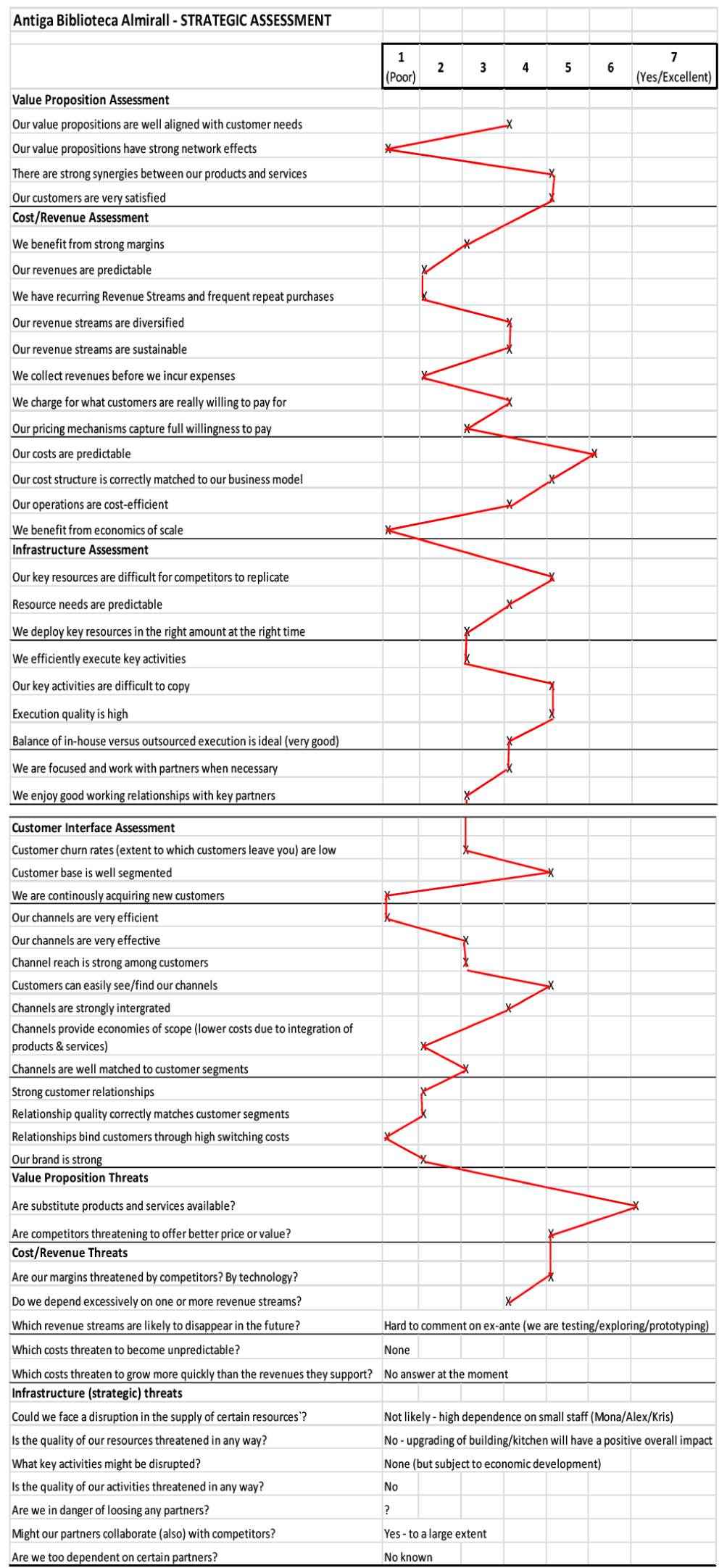
| Customer Interface Threats | |
| Could our market be saturated soon? | Not likely |
| Are competitors threatening our market-share? | Yes - high level of competition |
| How likely are customers to defect? | Not known at this stage |
| How quickly will competition in our market intensify? | Not known at this stage |
| Do competitors threaten our channels? | Not directly, but yes - the market is dynamic |
| Are our channels in danger of becoming irrelevant to customers? | Not known at this stage |
| Are any of our customer relationships in danger of deteriorating? | No |
| Value Proposition Opportunities | |
| Could we generate recurring revenues by converting products into services? | This is possible (from container to content) |
| Could we better intergrate our products or services? | Yes - possibly |
| Which additional customer needs could we satisfy? | See business model canvas 2 |
| What complements to or extension of our value proposition are possible? | See business model canvas 2 |
| What other jobs could we do on behalf of customers? | See business model canvas 2 |
| Cost/Revenue Opportunities | |
| Can we replace one-time transaction revenues with recurring revenues? | Possibly by aiming at repeat customers (companies) |
| What other elements would customers we willing to pay for? | See business model canvas 2 |
| Do we have cross-selling opportunities either internally or with partners? | See business model canvas 2 |
| What other revenue streams could we add or create? | Ths is under investigation |
| Can we increase prices? | Yes, possibly (we are currently testing the pricing-sensitivity) |
| Where can we reduce costs? | Unknown (more efficient electrical appliences and by upgradings) |
| Infrastructure Opportunities | |
| Could we use less costly resources to achieve the same results? | No |
| Which key resources could be better sourced from partners? | Under investigation |
| Which key resources are under-exploited? | None (but higher efficiency sought) |
| Do we have unused intellectual property of value to others? | Possibly (consulting others in same situation?) |
| Could we standardize some key activities? | Possibly |
| How could we improve efficiency in general? | Yes - potentially |
| Would IT-support/digitalization boost efficiency? | Yes - digitalization of booking and client-management |
| Are there (additiional) outsourcing opportunities? | Possibly - under investigation |
| Could greater collaboration with partners help us focus on our core business? | Possibly - strategic collaboration is investigated |
| Are there cross-selling opportunities with partners? | Possibly |
| Could (new) partner channels help us better reach customers? | Possibly |
| Could partners complement our value proposition? | Possibly |
| Customer Interface Opportunities | |
| How can we benefit from a growing market? | See business model canvas 2 |
| Could we serve new customer segments? | Possibly |
| Could we better serve our customer through finer segmentation? | Not likely |
| How could we improve channel efficiency or effectiveness? | Not clear |
| Could we integrate our channels better? | Possibly - must be investigated |
| Could we find new complementary partner channels? | Yes, possibly and under evaluation |
| Could we increase margins by directly serving customers? | This is being evaluate, for instance by investing in own equipment |
| Could we better align channels with customer segments? | Possibly - we are currently testing and evaluating |
| Is there potential to improve customer follow-up? | Possibly - we are now testing/communicating with customers |
| How could we tighten our relationships with customers? | Will intent on this with focus on corporate sales (smaller groups) |
| Could we improve personalization? | Possibly, but I believe we are doing this generally well. Testing. |
| How could we increase switching costs? | By making sure that all customer-contacts are satisfactory |
| Have we identified and "fired" unprofitable customers? If not, why? | Not yet. |
| Do we need to automate some relationships (using IT)? | Yes, this is possible. |
| 68 | |
| Source: Osterwalder & Pigneur (2010) |
E – Social Media Profile and Activity
During fall 2015 it was decided to develop a revised media platform. The result of this work is a well-developed webpage enabling prospects to contact and interact with Antiga Biblioteca Almirall through a digital media platform.
The social media traffic since the relaunch in October 2015 is illustrated in the following graph, which indicates weekly visits to the webpage in the form of “page views” and “scroll-activity.”
As of today it is still unclear how significant the social media presence is, but it is overall believed to be of growing importance, and further campaigns are planned with the objective of developing better strategies and better measures of the effects of the social media activity.
The owners´ perception as of writing is that a social media presence not only is obligatory, but also that the webpage content, the style, and the communication profile must be further sharpened in accordance with further developments of Business Model 3 and along the lines of a “concept house” combining the container (the house) with appropriate content.
F – Financial Status Quo
| Antiga Biblioteca Almirall - Current operational revenue and cost | |||
| Year | 2016 | ||
| Number ofevents/year | Price per event€ | Total | |
| Revenue | |||
| Business | 6 | 2 000 | € 12 000,00 |
| Private | 12 | 1 500 | € 18 000,00 |
| Other events | 6 | 1 000 | € 6 000,00 |
| € 36 000,00 | |||
| Costs | Monthly cost | Months | |
| Rent to owner | 700 | 12 | € 8 400,00 |
| Maintenance | 700 | 12 | € 8 400,00 |
| Telephone/internet | 120 | 12 | € 1 440,00 |
| Insurance | 66 | 12 | € 792,00 |
| Utilities | 650 | 12 | € 7 800,00 |
| Marketing | 200 | 12 | € 2 400,00 |
| Managment fee | 600 | 12 | € 7 200,00 |
| € 36 432,00 | |||
Comments
The current utilization of the venue is very moderate and yet the operation is still close to reaching breakeven based on incremental revenues and costs.
Also, the pricing of the venue is moderate compared to other venues. Taking this into account, the owners are of the opinion that the operation of the property may become quite profitable in the long term.
It is also worth noting that the owners, as typical small-business owners/entrepreneurs, do not feel the need for further number crunching and analysis than this simple status quo assessment for decision-making (Busenitz & Barney, 1997). As a result of the prototyping outcome, the conclusions drawn from Business Model 3, and their gut feeling, they are confident enough to proceed based on a mix of rational and creative thinking about how to develop their venture.
References
- Achtenhagen, L., L. Melin & L. Naldi (2013). Dynamics of business models: Strategizing, critical capabilities and activities for sustained value creation. Long Range Planning, 46(6), 427–42.
- Apud, S., T Lenartowicz & J.P. Johnson (2003). Intercultural competence: What do practitioners really know? AIB-SE (USA), 2003 Annual Meeting, Clearwater, FL. Barney, J.B. (1996). The resource-based theory of the firm. Organization Science, 7(5), 469–69.
- Baron, R.A. & M.D. Ensley (2006). Opportunity recognition as the detection of meaningful patterns: Evidence from domparison of novice and experienced entrepreneurs. Management Science, 52(9), 1331–44. Busenitz, L.W. & J.B. Barney (1997). Differences between entrepreneurs and managers in large organizations: Biases and heuristics in strategic decision-making. Journal of Business Venturing, 12 (1), 9–30.
- Chesbrough, H. (2010). Business model innovation: Opportunities and barriers. Long Range Planning, 43(2-3), 354–63.
- Eckhardt, G.M. & F. Bardhi (2015) The sharing economy isn´t about sharing at all. Harvard Business Review, January 28.
- Grant, R.M. (1996). Toward a knowledge-based theory of the firm. Strategic Management Journal, 17 (Special Issue: Knowledge and the Firm), 109–22.
- Kotey, B. & G.G. Meredith (1997). Relationships among owner/manager personal values, business strategies, and enterprise performance. Journal of Small Business Management, 35(2), 37–64.
- Lund, J.F. & R. Lorentzen (1980). Strategisk ledelse (Strategic leadership), 3rd edition. Oslo: Universitetsforlaget.
- Miller, D. & J.M. Toulouse (1986). Chief executive personality and corporate strategy and structure in small firms. Management Science, 29, 221–35.
- Osborne, D.J. (2005). Converting data to information for case study analysis. Decision Sciences Journal of Innovative Education, 3(1), 137–41.
- Osterwalder, A. & Y. Pigneur (2010). Business model generationlengers. John Wiley & Sons.
- Porter, M. E.. (2008). The five competitive forces that shape strategy. Harvard Business Review, January.
